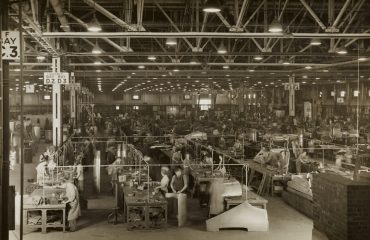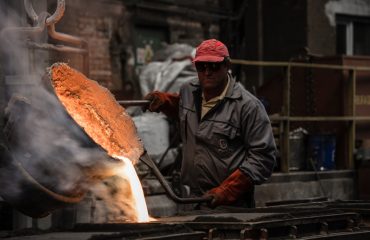In a world increasingly focused on sustainability and reducing waste, the design of long-life steel products is paramount. Creating steel items destined for decades, even centuries, of use requires a meticulous approach that considers material science, manufacturing techniques, and the very essence of enduring design. This post delves into the crucial aspects of designing steel products built to withstand the test of time.
1. Selecting the Right Steel Grade: The Foundation of Durability
The journey to creating a long-lasting steel product begins with selecting the appropriate steel grade. This isn’t a simple matter of choosing the cheapest option; rather, it requires a deep understanding of the product’s intended application and the environmental conditions it will face. Factors to consider include:
- Corrosion Resistance: For outdoor applications or environments with high humidity, choosing a corrosion-resistant steel (e.g., stainless steel) is crucial. Different grades of stainless steel offer varying levels of corrosion resistance, depending on their chromium and other alloying element content. Consider factors like pitting corrosion and crevice corrosion, which can compromise structural integrity over time.
- Strength and Hardness: The required strength and hardness of the steel depend on the product’s function. High-strength low-alloy (HSLA) steels offer a good balance of strength and weldability, while other alloys might be necessary for extreme applications requiring exceptional hardness or impact resistance.
- Weldability: If the product involves welding, the chosen steel grade must be readily weldable without compromising its structural integrity or corrosion resistance. Some high-strength steels can be challenging to weld, requiring specialized techniques and pre- and post-weld treatments.
- Cost-Effectiveness: While longevity is key, the cost of the steel grade must be balanced against its lifespan and the overall cost of ownership. A slightly more expensive, highly durable steel might prove more economical in the long run due to reduced maintenance and replacement costs.
2. Optimized Design for Structural Integrity: Beyond Aesthetics
The design of the steel product itself is critical to its longevity. A poorly designed product, even if made from the highest-quality steel, will fail prematurely. Key design considerations include:
- Stress Analysis: Finite element analysis (FEA) and other computational methods can simulate the stresses and strains the product will experience during its lifetime. This allows designers to identify potential weak points and optimize the design to minimize stress concentrations.
- Fatigue Resistance: Cyclic loading can lead to fatigue failure, even in strong steels. Designing for fatigue resistance involves minimizing stress concentrations, using appropriate surface treatments, and selecting steel grades with high fatigue strength.
- Corrosion Protection: Even corrosion-resistant steels benefit from additional corrosion protection measures. This can include coatings (e.g., paint, powder coating), galvanization, or other surface treatments to prevent corrosion initiation and propagation.
- Modular Design: A modular design allows for easier repair and replacement of individual components, extending the product’s lifespan. This reduces the need for complete product replacement, minimizing waste and environmental impact.
3. Precision Manufacturing: Ensuring Quality and Consistency
The manufacturing process plays a crucial role in determining the quality and longevity of a steel product. Precise manufacturing techniques minimize defects and ensure consistency, leading to improved durability and reliability. Key aspects include:
- Proper Welding Techniques: Welding is a common joining method for steel products. The use of appropriate welding techniques (e.g., gas metal arc welding (GMAW), gas tungsten arc welding (GTAW)) and skilled welders is essential to ensure strong, reliable welds that resist cracking and corrosion.
- Heat Treatment: Heat treatment processes can enhance the strength, hardness, and toughness of the steel. Proper heat treatment is crucial for achieving the desired mechanical properties and ensuring the product’s durability.
- Surface Finishing: Surface finishing processes, such as shot peening or polishing, can improve the fatigue resistance and corrosion resistance of the steel. These processes can also improve the product’s aesthetic appeal.
- Quality Control: Rigorous quality control measures throughout the manufacturing process are vital to identify and rectify defects early on. This ensures that only high-quality products leave the manufacturing facility.
4. Sustainable Material Sourcing and Lifecycle Management: A Holistic Approach
Designing for longevity is not just about the product itself; it also involves considering the sustainability of the entire lifecycle. This includes responsible material sourcing and end-of-life management.
- Recycled Steel: Using recycled steel reduces the environmental impact of steel production, as it requires significantly less energy than producing steel from iron ore.
- Sustainable Manufacturing Practices: Adopting sustainable manufacturing practices, such as reducing energy consumption and minimizing waste, further enhances the environmental credentials of the product.
- Design for Disassembly and Recycling: Designing products for easy disassembly and recycling at the end of their life simplifies the recycling process and maximizes the recovery of valuable materials.
- Extended Producer Responsibility (EPR): Embracing EPR schemes allows manufacturers to take responsibility for the end-of-life management of their products, ensuring responsible disposal and recycling.
5. Testing and Validation: Ensuring Long-Term Performance
Thorough testing and validation are essential to verify the long-term performance of the steel product. This involves subjecting the product to various tests to simulate real-world conditions and assess its durability and reliability.
- Corrosion Testing: Accelerated corrosion tests, such as salt spray testing, can assess the corrosion resistance of the steel and its coatings.
- Mechanical Testing: Tensile testing, impact testing, and fatigue testing evaluate the mechanical properties of the steel and its ability to withstand various loading conditions.
- Environmental Testing: Exposure to extreme temperatures, humidity, and other environmental factors can assess the product’s performance under real-world conditions.
- Long-Term Field Testing: Deploying prototypes in real-world applications allows for long-term monitoring and evaluation of the product’s performance and durability.
By carefully considering these aspects, designers can create steel products that not only meet current needs but also stand the test of time, contributing to a more sustainable and resource-efficient future.
Tags: long-life steel, durable steel products, steel design, sustainable steel, corrosion resistance




